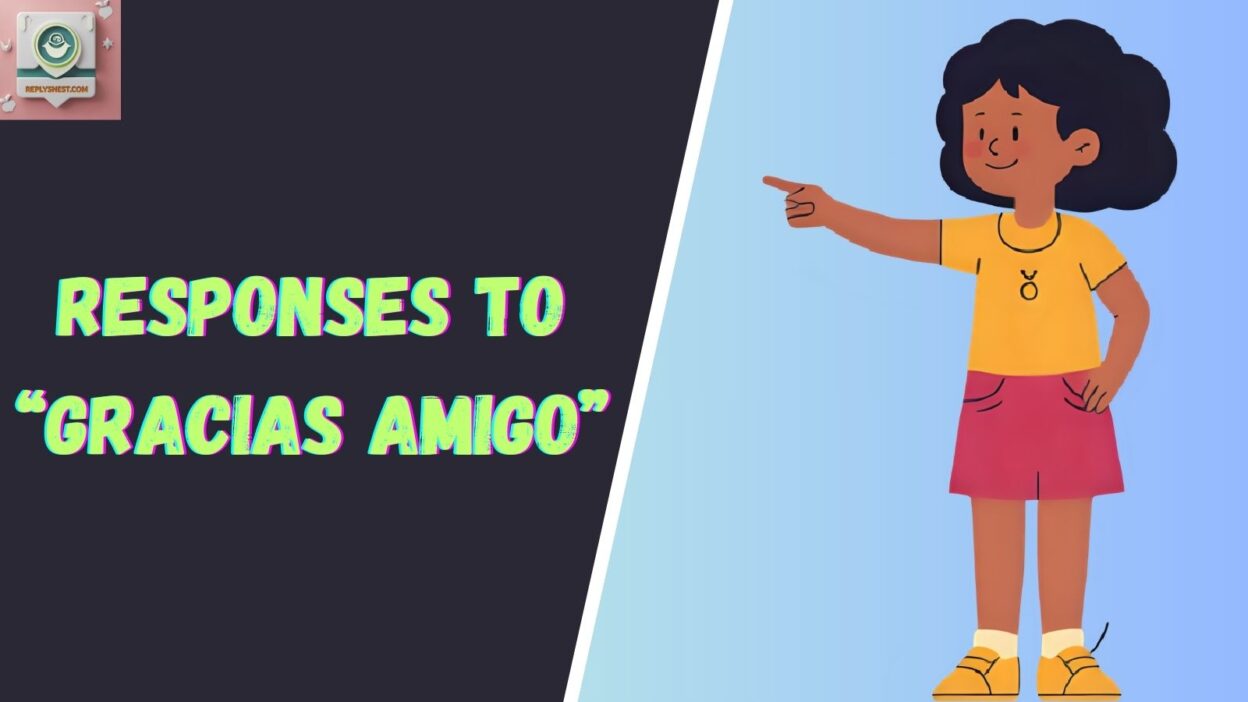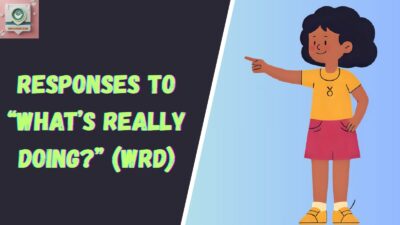When someone says “Gracias Amigo” (which means “Thank you, my friend” in Spanish), it’s more than just a casual “thanks.” It carries warmth, friendship, and sincerity. Whether you’re replying in English, Spanish, or a mix of both, your response can strengthen bonds and show how much you value the connection. Responses to “Gracias Amigo”.
When someone says Gracias, amigo, it’s more than just a Spanish phrase—it carries warmth, friendship, and genuine gratitude. A quick De nada (or “NAH-dah”) is the most common and versatile reply. I often use this in daily interactions, whether it’s a friend offering a drink at a party or a colleague helping with work. You can also say No hay de qué (pronounced “Noh ah-ee deh KEH”), which translates to “Don’t mention it” or “It’s nothing.” Both responses are polite, applicable in formal and casual settings, and they make the interaction feel natural and sincere.
For moments when you want to add a little extra, phrases like Es un placer (“It’s my pleasure”) or Con gusto (“With pleasure”) make the exchange more helpful and genuine. I still remember a local tour guide on a traveling trip saying “Kon GOO-stoh” after I thanked him—it left a warm and lasting impression. You can also say Happy to help, Thanks to you too, or even turn the gratitude back with Gracias a ti or Gracias a usted. These expressions show you are not only being thankful but also showing appreciation, whether it’s for a small favor, an extra effort, or simply a moment of friendship and support.
1. “De nada, amigo.”
Best use: Perfect if you want to keep the response in Spanish and equally friendly.
Not to use: If the other person doesn’t understand Spanish at all.
Other ways to say: “No hay de qué.”
Example: “Gracias amigo!” → “De nada, amigo, siempre aquí para ti.”
Read More: Better Ways to Say “Thank You for Your Service”
2. “Anytime, buddy.”
Best use: When you want to sound casual and approachable.
Not to use: In formal or professional settings.
Other ways to say: “Always, my friend.”
Example: “Gracias amigo!” → “Anytime, buddy, you know that.”
3. “It’s my pleasure.”
Best use: Great for polite and heartfelt replies.
Not to use: If you’re trying to keep things very casual.
Other ways to say: “Happy to help.”
Example: “Gracias amigo!” → “It’s my pleasure, really.”
4. “No worries, my friend.”
Best use: Works well in relaxed conversations.
Not to use: When the gratitude is for something serious or formal.
Other ways to say: “No problem at all.”
Example: “Gracias amigo!” → “No worries, my friend, I’ve got you.”
5. “Always here for you.”
Best use: Ideal when you want to reassure someone of your support.
Not to use: If you don’t actually plan to follow through.
Other ways to say: “I’ve always got your back.”
Example: “Gracias amigo!” → “Always here for you, don’t mention it.”
6. “Of course, amigo.”
Best use: Perfect blend of casual English with Spanish warmth.
Not to use: If you want to keep the tone fully formal.
Other ways to say: “For sure, friend.”
Example: “Gracias amigo!” → “Of course, amigo, anytime.”
7. “That’s what friends are for.”
Best use: To highlight genuine friendship.
Not to use: In a professional context with colleagues.
Other ways to say: “Friends help each other.”
Example: “Gracias amigo!” → “That’s what friends are for, right?”
8. “You got it.”
Best use: Short, casual, and cool response.
Not to use: When sincerity is expected.
Other ways to say: “Sure thing.”
Example: “Gracias amigo!” → “You got it, no problem.”
9. “Don’t mention it.”
Best use: To keep things light and modest.
Not to use: When you want your effort acknowledged.
Other ways to say: “It was nothing.”
Example: “Gracias amigo!” → “Don’t mention it, anytime.”
10. “Happy I could help.”
Best use: Great when you genuinely enjoyed helping.
Not to use: If you actually felt burdened.
Other ways to say: “I’m glad it worked out.”
Example: “Gracias amigo!” → “Happy I could help you out today.”
11. “Con mucho gusto.”
Best use: A warm Spanish phrase meaning “with great pleasure.”
Not to use: If your friend doesn’t speak Spanish.
Other ways to say: “It’s a pleasure.”
Example: “Gracias amigo!” → “Con mucho gusto, hermano.”
12. “You don’t need to thank me.”
Best use: When you want to downplay your effort.
Not to use: If you do want credit.
Other ways to say: “No thanks necessary.”
Example: “Gracias amigo!” → “You don’t need to thank me, it’s nothing.”
13. “That’s nothing.”
Best use: Modest and simple way to respond.
Not to use: If the person did thank you for something big.
Other ways to say: “No big deal.”
Example: “Gracias amigo!” → “That’s nothing, don’t worry.”
14. “I’d do it again anytime.”
Best use: When you want to emphasize ongoing support.
Not to use: If it was a one-time thing.
Other ways to say: “I’d gladly help again.”
Example: “Gracias amigo!” → “I’d do it again anytime, you know that.”
15. “Don’t sweat it.”
Best use: Easygoing and lighthearted.
Not to use: In serious or emotional situations.
Other ways to say: “No biggie.”
Example: “Gracias amigo!” → “Don’t sweat it, my guy.”
16. “You’re always welcome.”
Best use: Perfect for polite and caring responses.
Not to use: If you want to sound more playful.
Other ways to say: “Welcome anytime.”
Example: “Gracias amigo!” → “You’re always welcome, truly.”
17. “That’s what family does.”
Best use: For very close friendships that feel like family.
Not to use: With acquaintances.
Other ways to say: “You’re like family, so of course.”
Example: “Gracias amigo!” → “That’s what family does for each other.”
18. “No problem at all.”
Best use: Classic, simple, and effective.
Not to use: If you want to sound more original.
Other ways to say: “Not a problem.”
Example: “Gracias amigo!” → “No problem at all, happy to help.”
19. “Glad I could be there.”
Best use: When you’re thankful you were available to help.
Not to use: If you weren’t actually there.
Other ways to say: “Happy I was around.”
Example: “Gracias amigo!” → “Glad I could be there when you needed.”
20. “For you? Always.”
Best use: Warm and affectionate response.
Not to use: With people you’re not close to.
Other ways to say: “Anytime for you.”
Example: “Gracias amigo!” → “For you? Always.”
21. “It’s nothing, man.”
Best use: Casual and friendly, especially guy-to-guy.
Not to use: In formal contexts.
Other ways to say: “No big deal, man.”
Example: “Gracias amigo!” → “It’s nothing, man, don’t worry.”
22. “Think nothing of it.”
Best use: Old-school but still classy.
Not to use: If you want to keep things very modern.
Other ways to say: “Forget about it.”
Example: “Gracias amigo!” → “Think nothing of it, friend.”
23. “I’ve got your back.”
Best use: To reassure loyalty and support.
Not to use: If it’s about something small or casual.
Other ways to say: “Always backing you up.”
Example: “Gracias amigo!” → “I’ve got your back, don’t even ask.”
24. “It’s all good.”
Best use: Relaxed, easygoing, and modern.
Not to use: If gratitude was for something significant.
Other ways to say: “All good.”
Example: “Gracias amigo!” → “It’s all good, happy to help.”
25. “That’s what amigos are for.”
Best use: Playful nod to their Spanish phrase.
Not to use: In professional situations.
Other ways to say: “That’s why we’re friends.”
Example: “Gracias amigo!” → “That’s what amigos are for, right?”
Conclusion
When someone says “Gracias Amigo,” they’re not just thanking you—they’re affirming friendship and kindness. Your response matters because it can deepen the connection, show gratitude in return, and reflect your personality.
From playful replies like “Don’t sweat it” to warm ones like “Always here for you” or heartfelt Spanish responses like “Con mucho gusto,” you now have 30 thoughtful ways to reply. Personally, I’ve found that mixing in Spanish phrases when appropriate often adds an extra touch of closeness—it makes people smile and feel truly valued.
So next time someone says “Gracias Amigo,” you’ll have the perfect words to make the moment warmer, friendlier, and more memorable.
10 Editor’s Picks (and Why People Choose Them)
- “De nada, amigo.” – Authentic, simple, and keeps the same language vibe.
- “Anytime, buddy.” – Casual and approachable, feels natural among friends.
- “It’s my pleasure.” – Polished and sincere, great balance of warmth and respect.
- “Always here for you.” – Deeply reassuring, especially in close friendships.
- “That’s what friends are for.” – Affirms loyalty and the value of friendship.
- “You got it.” – Short, confident, and easy to remember.
- “Happy I could help.” – Makes your friend feel that you genuinely cared.
- “Con mucho gusto.” – Elegant Spanish response, adds cultural richness.
- “For you? Always.” – Heartfelt, affectionate, and very personal.
- “That’s what amigos are for.” – Playful and fun twist, keeps the mood light.



